The website security landscape is as complicated as it is treacherous. We often deal with clients who become reinfected over and over again. Once the attackers establish a foothold in an environment and recognize that a website is vulnerable, you can guarantee that they will be back to try to reinfect the website.
Our website firewall is designed to protect websites from attack and infection, but there are many different ways that attackers establish their presence into a compromised environment. A website firewall is but one aspect in a larger defense in-depth strategy to protect your website!
In this post I will review some of these other attack vectors and some ways that website owners can protect their sites from becoming reinfected.
First, let’s review how our web application firewall (WAF) works
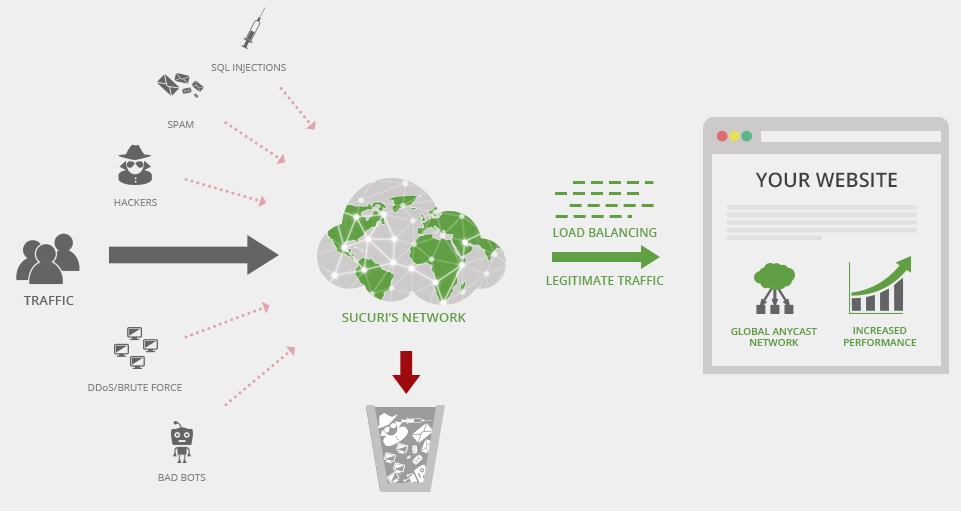
Our firewall service acts as a reverse proxy. Essentially, it sits between the web server and acts as a sort of “gateway” for the traffic coming to your website. At its core it is a pretty straightforward concept: block bad traffic, allow good traffic. Attacks such as SQL injections, cross site scripting (XSS) and DDoS attacks will get blocked by our generic rules. Any known exploits against vulnerable website software such as plugins, themes and core files should also be blocked. However, our firewall is a very complicated product with a lot of different features! Let’s take a look at some of them:
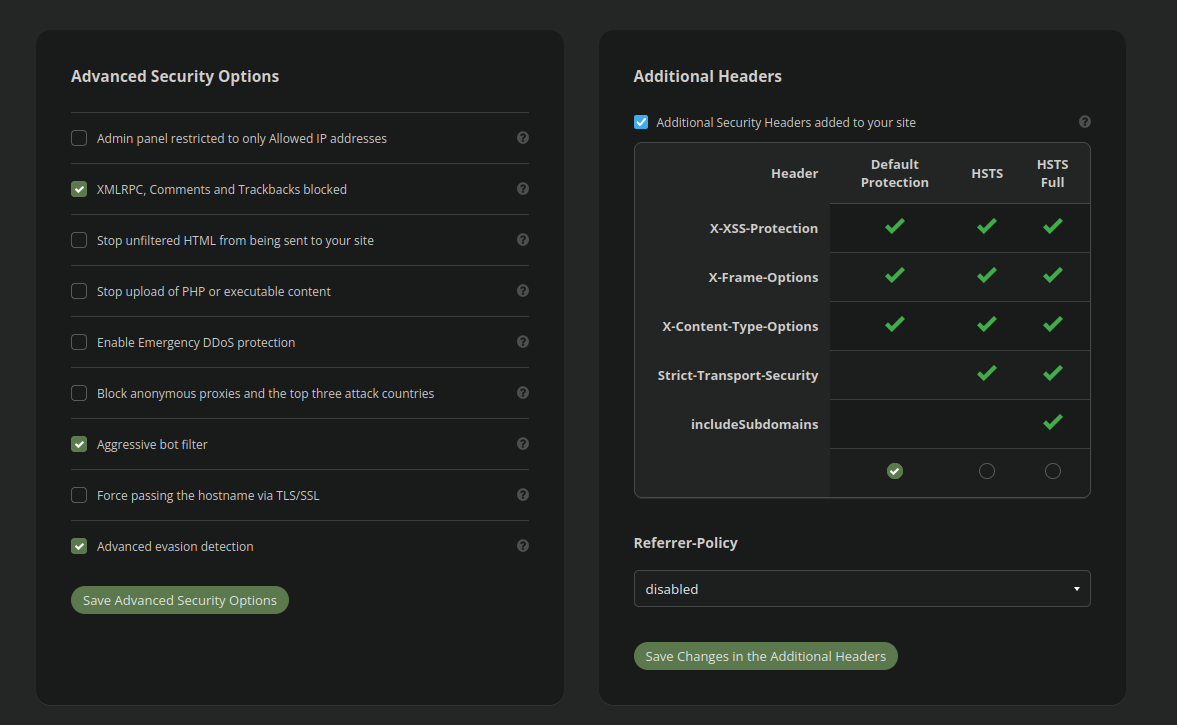
Our firewall is designed to be platform agnostic. That is, it will work with any CMS platform. It doesn’t matter if your website is using WordPress, Magento, Joomla, OpenCart or any of the other CMS platforms available on the web; our firewall can be used to protect your website from attacks.
Different CMS platforms vary greatly from one another and work in very different ways. Since it is not specific to any platform, the basic firewall rules that apply across the board need to be generic enough to not interfere with the routine operations of normal website traffic. So, out-of-the-box it should be tailored to your website and the CMS it is based on to improve security!
Different CMS platforms have different admin panel URLs and the firewall needs to be configured to work with your website. Firewall options like the following:
Admin panel restricted to only Allowed IP addresses
Are not enabled by default for this reason. If you want the firewall to improve the security of your admin panel the URL should be added into the access control settings:
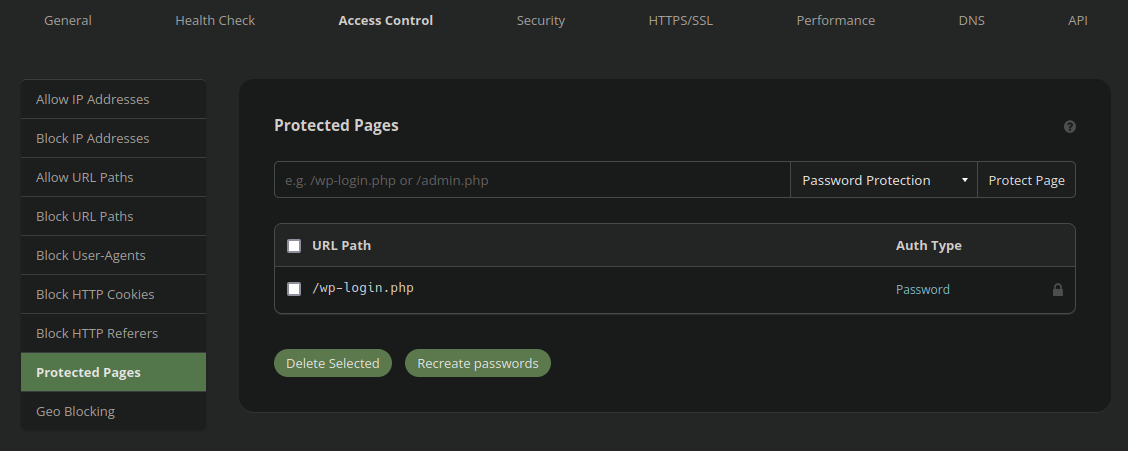
Moreover, if your website contains a vulnerable upload form or ability to upload potentially malicious content, then this needs to be enabled manually as well in the advanced security settings:
Stop upload of PHP or executable content
You and/or your website developer should review the security and access control settings within the firewall configuration to determine the most robust configuration that isn’t going to interfere with normal operations. If you aren’t sure how to do this, you can always submit a product support ticket and our analysts are happy to assist you with determining the optimum configuration for your website!
Exploring Different Attack Vectors
Websites can be attacked in many different ways. Not all malicious traffic is going to come through the firewall itself. Most notably, attacks can target the hosting IP itself, but there are many other aspects to the attack surface for an average website.
Bypass Prevention
One of the most overlooked aspects of our firewall is the presence of bypass prevention. Without adding some custom rules to the website’s .htaccess or NGINX configuration file the attackers can circumvent the firewall by attacking the host IP directly (if it is known). We need to ensure that all traffic coming to the website is being filtered by our firewall service. To do that this guide can be followed, or you can submit a ticket to our analysts to configure that for you!
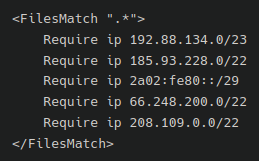
Admin Panel Attacks
Attacks on website admin panels are tremendously common. By default admin login panels on CMS platforms are open to the world and at high risk of brute force attacks. Unless some third party security plugin or extension is installed on the website attackers will not face any issue trying thousands of passwords until they break their way in. It is one of the most common attacks that we see.
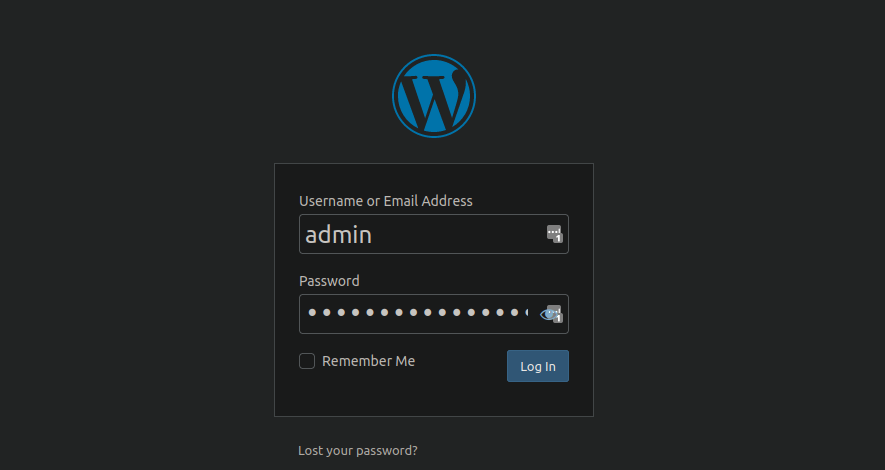
Many privilege escalation vulnerabilities have been found in the past. These allow low-level “subscriber” accounts to maliciously execute “administrator” functions. Some vulnerabilities allow attackers to execute administrator operations without any account at all. It is crucial to keep all plugins, extensions and components up to date so that your website has minimal chance of being vulnerable in this way.
Our firewall should block these types of vulnerabilities, but we of course still recommend keeping your environment fully patched and up to date.
It is also very common for attackers to leave behind “rogue” admin accounts. This allows them to reinfect the website even after the malware is cleared from the website environment. These accounts must be removed in the wake of a compromise.
Our website firewall can go to great lengths to help protect your admin panel from abuse. As I mentioned earlier in this post, the firewall security and access control settings should be tailored to your specific website for optimum protection. We also have a WordPress hardening guide that covers some of the ways that WordPress website owners can help keep themselves safe even without our firewall.
Insecure Hosting Environments
Let’s take a look at some of the different ways that the hosting environment itself (rather than the websites) can lend itself to a compromise.
FTP/SFTP/SSH
Even the presence of firewall bypass prevention is not going to prevent attacks on the server itself, however. Most web servers allow for either FTP, SFTP or SSH traffic usually via ports 21/22. Most often this traffic is not restricted via IP address and is open to the world. This places these accounts at risk of brute force attacks and can be compromised, particularly if the passwords are weak. A compromised FTP/SFTP/SSH account will provide the attackers with complete control over the file structure and database.
Exactly how this traffic is handled varies from hosting provider to hosting provider. Typically they’d have some security software such as mod_security to help stem attackers, but no security is perfect. Some hosts require you to “unlock” FTP for a certain period of time, or allow only certain IP addresses to access the server using this method, but they are a small minority. Most often these network protocols are open to the world without any control from the hosting provider.
Make sure that all FTP or SFTP accounts have strong passwords. Ideally, the server should be restricted to only SSH key authentication and limited to only allowed IP addresses. This is markedly more secure than any password could ever be. However, depending on your host this may not be possible. If your website is hosted on an unmanaged Virtual Private Server (VPS) then the server security lands in your lap.
Cross-Site Contamination
One of the most frequent attack vectors that we run into is cross-site contamination. This is when multiple websites share the same hosting space. Using the default configuration settings in many environments will allow websites to infect each other and will all be as insecure as the weakest link. A single poor password on a single wp-admin panel can lead to an entire environment falling victim to a malware attack!

Insecure cPanel environments
Many website administrators have not one but many websites. These are often all configured as Addon Domains within a standard cPanel interface.

This is a popular way to add additional websites to your hosting plan because it is easy, convenient and (most of all) cheap! However, this is easily the most insecure way to host multiple websites. The problem with this configuration is that the website files for website A are going to be owned by the same user:group as websites B and C. The underlying PHP process will also run as the same user.
What does this mean? It means that if one website is infected then there is a huge risk that malware will spread to all the other websites hosted in the same cPanel. If website A is protected by our firewall but websites B and C are not then website A can still easily get infected.
If you are using cPanel with multiple websites, ideally these should be configured within WHM to each have their own separate, isolated cPanel environment.
Which brings us to our next attack vector…
Insecure WHM Environments
Another issue that we frequently see is cross site contamination through insecure WHM environments. Namely, WHM servers that do not have symlink protection enabled.

The default option for symlink protection is for it to be disabled. Enabling symlink protection will cause a modest performance decrease on the server but the security benefits far outweigh this cost. Having this option disabled renders the entire environment at risk of cross contamination, whether or not the file ownership and permissions are configured correctly and even if each website has a separate cPanel instance. The reason being is that attackers can move laterally through the network via the use of symbolic links. Some more aggressive infections (for example, the notorious AnonymousFox hack) specifically target this and actively exploit entire environments to spread malware, phishing and spam.
Compromised cPanel Account
We have seen some rather aggressive attacks that quickly reinfect cPanel environments. The way that they do this is very simple but effective!
If an attacker has write access to the files (ie: a compromised wp-admin administrator account with default WordPress settings) then they can edit the following files:
- .cpanel/contactinfo
- /home/<user>/.contactemail
And place their own email inside. Once that is done all they need to do is request a password reset via email and voila! They’ve compromised the entire cPanel.
To maintain a secure WHM environment we recommend disabling password reset via email entirely!

Compromised Hosting Provider Account
Hosting accounts are not immune to compromise either, particularly if the password is weak or if two factor authentication (2FA) is not enabled. Most hosts provide a file manager type application to allow you to directly edit and modify files within the website environment. This is very useful for routine website administration and configuration, but like anything else, can also be misused by attackers to spread malware.
If your hosting provider account is compromised, the attackers can easily log in remotely and have full control over the environment. Most likely the attackers would start by uploading a webshell since their functionality far exceeds what most hosts provide to their clients.
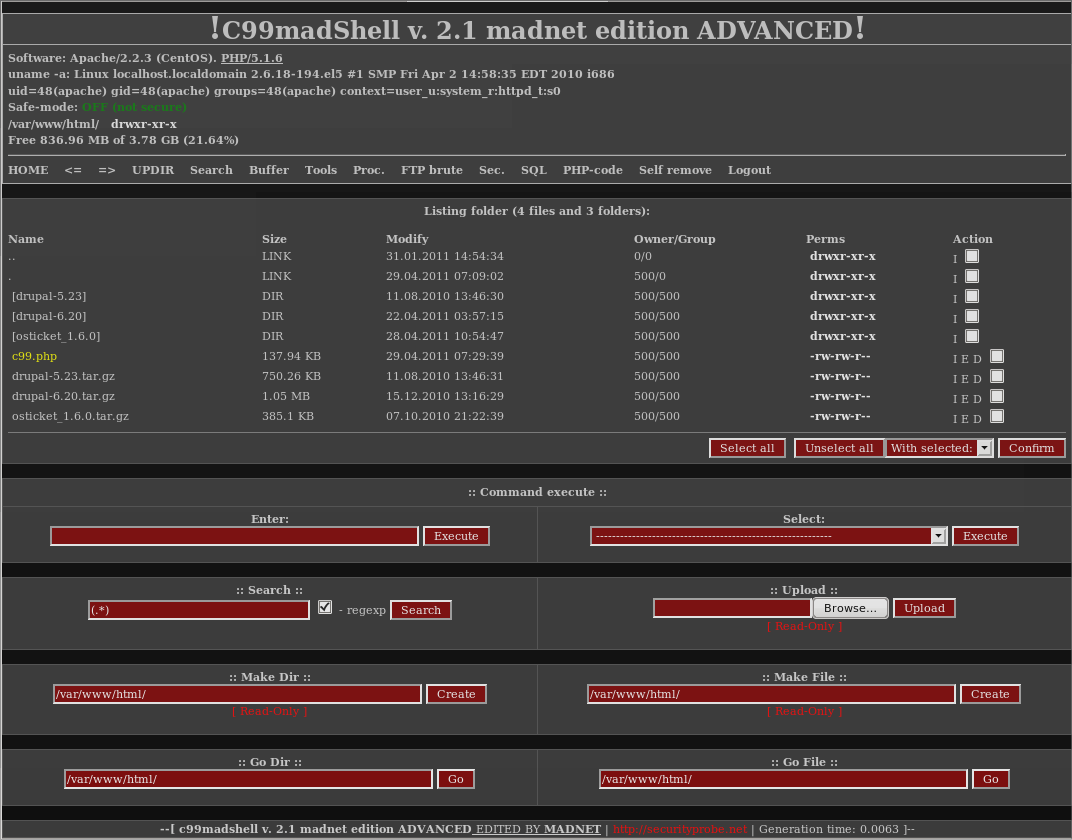
Insecure Hosting Provider
Most hosting providers do a good job of maintaining their server security. They tend to have a dedicated security team making sure that all security patches and updates are installed to their servers and to ensure that the file/directory user:group permissions are all above board.
In some instances, however, we have seen hosting environments that have been completely misconfigured to give hosting accounts write access to all other hosting accounts on the server. Sometimes this has been a misconfiguration in the file structure. Other times, it is a misconfiguration in the database software. In either case it has led to repeated website compromises that had nothing to do with the website owners themselves at all.
Compromised Server
While thankfully rare, some exploits discovered in the past allow for full, remote takeover of a webserver at the root level. For example, in late 2019 a critical vulnerability was discovered in Exim, the default mail server software used in WHM and cPanel environments. This exploit allowed for both local and remote root-level privilege escalation. Many servers the world over, particularly poorly maintained VPS servers, were affected by this glaring flaw on the server backend. This left many website owners wondering how they were hacked in the first place.
Other Vectors of Compromise
Not all attack vectors are directly related to the websites or even the hosting environment. Let’s explore some other aspects of the attack surface!
Compromised Workstation or Browser
Another attack vector is the computer that you are sitting at this very second!
If a computer that is used to manage your website becomes compromised then it’s entirely possible for the attackers to use it as a reinfection vector. For example, if a keylogger trojan is installed into your workstation then it doesn’t matter how many times you change your website password, the attackers will always be able to authenticate into the environment. This is one of many reasons why enabling two factor authentication (2FA) on your administrator panel is highly recommended.
Malicious third party browser extensions have also been known to insert malicious javascript into WordPress posts and pages while the website administrator is logged into the admin interface and working on their website content.
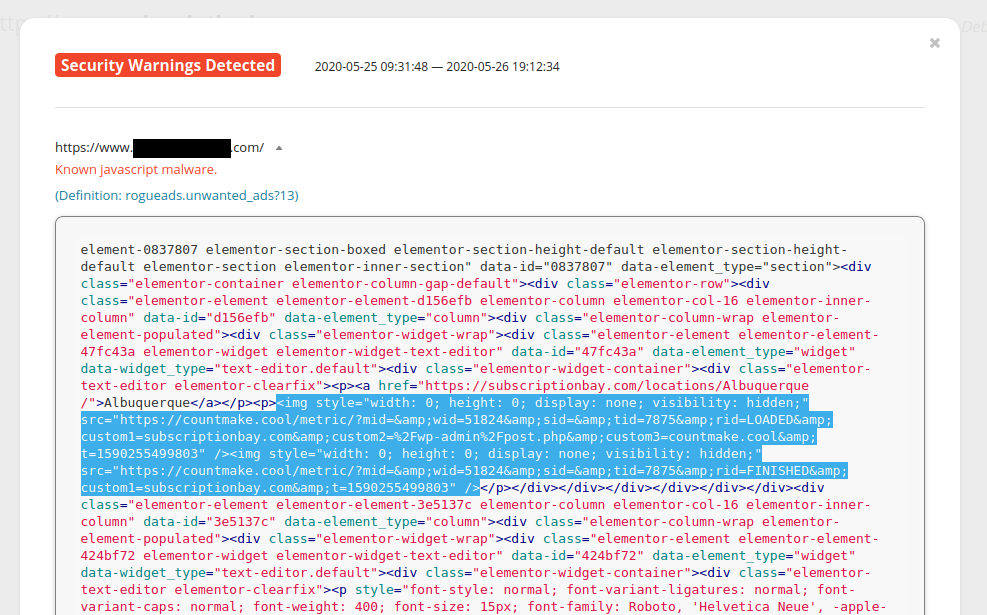
Remote Database Administration
Most host environments do not allow for remote database administration, but there have certainly been instances where it has been enabled. This is particularly true of VPS servers that have not been configured properly.
Most often the database can only be modified through connections on the hosting server itself. However, if remote database administration is enabled this may allow the attackers to:
- Brute force the database password
- Remotely inject malware into the database
Sometimes web applications do require remote database administration. For example, if you wish to allow shopping cart or guestbook applications on other servers to access your databases. Typically, only the necessary IP address would be added to the allow list to do this. However, like all useful features, attackers can also abuse this by adding their own IP address to the allow list if they’re able to compromise the cPanel account. This can later be used to reinfect the website environment.
Compromised Repository
This is not as common on websites that use primarily open source code such as WordPress. However, it’s certainly not out of the realm of possibility that a software repository could be compromised and spread malware to any websites that deploy code from it.
It’s also worth mentioning that many extensions website owners use on their website are premium; that is to say, not open source and require payment to use. This software is developed by private companies and we have no way of knowing what goes on behind their closed doors, what their security policies are, or even if a compromise took place at all.
Nulled/Hacked Bootleg Extensions
To continue on the topic of compromised extensions or other software, this leads me to the topic of nulled/hacked extensions. Some premium extensions cost a fair bit of money and not all website owners have the income to shell out for certain software extensions. Instead of just using completely open source solutions some website owners take the naughty shortcut of downloading pirated versions of these plugins to use on their site.
As we have explored on our blog in the past this software almost always comes pre-loaded with backdoors, spam or other unwelcome guests.
Security Misconfiguration
Exposed sensitive files can also result in a website compromise. Certain files in CMS installations contain sensitive information like database credentials such as the following:
WordPress: ./wp-config.php Joomla: ./configuration.php Magento1: ./app/etc/local.xml Magento2: ./app/etc/env.php Drupal: ./sites/default/settings.php Laravel Framework: ./.env
It’s not uncommon for website owners to create backups of these files on the server with names such as:
./wp-config.php.bak
This is a grave error as it exposes the database credentials to the world. Files with the .bak extension are not treated as PHP files and will be viewable in plain text to anybody poking around in places they shouldn’t be!
Phishing
Most often phishing attacks are seeking banking information, Facebook or Netflix logins. However, we have also seen phishing attacks that attempt to steal hosting account login information.

This is not the official GoDaddy website!
Thankfully, many hosting providers (and banks!) have taken the step of enabling two factor authentication (2FA) by default. This prevents any unauthorized user from logging into your account without physical access to your mobile device. This is a great step forward, although not all hosting providers have this feature enabled or even available.
Zero Day Exploit
And finally, every so often the discovery of a zero day exploit occurs in the wild. This is when a brand new vulnerability is discovered in a piece of software for which there is no available patch yet.
Depending on the type of exploit, our firewall may block it. For instance, SQL injections and cross site scripting attacks should be blocked no matter what. However, some more uncommon types of attacks may require the writing of a new firewall signature to block it. These new firewall rules need to be written by our engineers and go through quality assurance (QA) testing before they are deployed to our servers.
Security is an eternal game of cat and mouse between the defenders and attackers.
In Conclusion
As we have seen laid bare in this article: Website security is a complicated beast! There are many moving parts and the attack surface is broad to say the least. A website firewall is an excellent addition to any website owner’s security roster, but it should never be considered a panacea.
A proper everyday security posture is also an important procedure to be kept in mind to try to remain as secure as possible.
Remember, folks: There is no such thing as a perfectly secure system. Anybody who claims otherwise is either a liar or a fool.
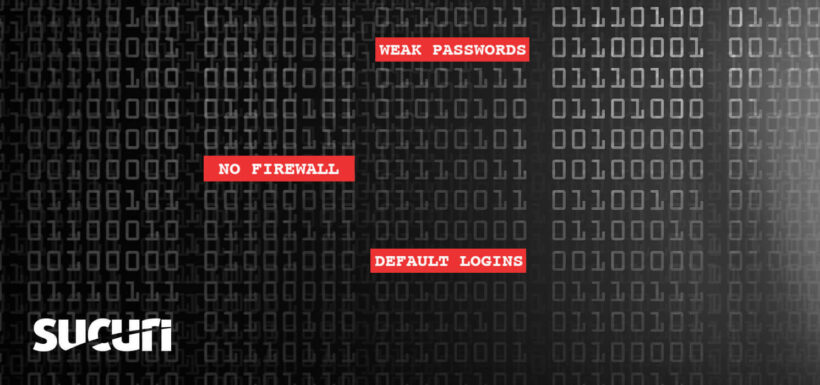
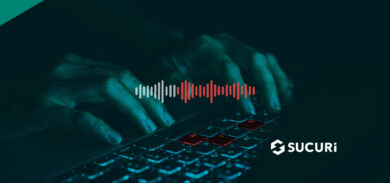





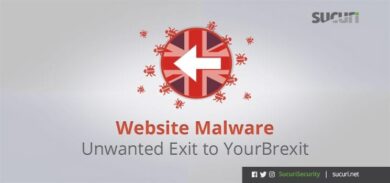

![Malware comes in many different varieties. Analyst Krasimir Konov is on this month’s Sucuri Sit-Down to help keep them all straight. From malicious iframes to SEO spam, join host Justin Channell as he racks Krasimir’s brain on all the different types of malware. Also, Krasimir discusses his recent blog post about a malicious cURL downloader, and Justin breaks down the latest website security news, including patched plugins you should update. Podcast Transcript Justin Channell: Hello, and welcome to the Sucuri Sit Down. I'm your host, Justin Channell, and this is a monthly podcast about website security, where we get in-depth with the malware removal experts here at Sucuri. Later in the show, I'll have our analyst Krasimir Konov to chat about some different types of malware, but first, let's take a look at other topics we've published on our blog and Sucuri labs notes this month. First up, we have some new information about credit card skimming with hackers using a hybrid method to steal payment information from eCommerce websites. Our analyst Dennis Sinegubko wrote about this for the Sucuri blog back at the beginning of June. Now, most credit card stealing malware is a client side JavaScript that grabs data and sends it to a third party server. But, that approach has a drawback for bad actors because it's still possible to track the requests and catch them as being suspicious. Now, to get around that, bad actors have started harvesting information server side by modifying core PHP files. In this case, the infection would be undetectable from the outside, but it's still going to be pretty easy to find because you're rarely modifying any of those core files, so any of those changes that are going to come up are going to be suspicious. To get around both of these drawbacks, we're seeing bad actors combine the two. So client side snippets of JavaScript are sending stolen credit card data to server side scripts that they've installed on the same server as the site. Now, this allows bad actors to cover their tracks a little bit because the traffic that's being redirected is going to the same server, and that's less likely to be flagged as suspicious. It's a bit more complicated to pull this off, but our team has been seeing this hybrid approach in the wild, so it's something to be on the lookout for. Now, another month has passed, and we found more cross site scripting attacks targeting WordPress plugins. Most notably, we discovered one that affects users of the YITH WooCommerce Ajax Product Filter plugin. Now, this is a plugin that allows WooCommerce stores to be filtered by product type, and it's pretty popular. It's got about 100,000 users right now, so with it being vulnerable, it's very important that all of them update to the latest version, which is 3.11.1. Some of the other plugins we found cross site scripting vulnerabilities with included Elementor Page Builder, Careerfy, JobSearch, and Newspaper. If you're looking for a full list of vulnerabilities that have been patched this month, John Castro at the Sucuri Labs blog has you covered. Check out our show notes for the link. Also, this month I had a blog go up detailing what's called a jibberish hack. It's basically the same motivation as an SEO spam attack where bad actors use your site's good standing to redirect visitors to their own sites. But in this attack, you'll find a bunch of randomly named folders filled with a ton of HTML files with really nonsensical file names like cheap-cool-hairstyles-photos.html. It's just going to be a mishmash of keywords that clearly you didn't put there. Unfortunately, just deleting all those HTML files and folders is not going to be enough to get rid of that jibberish hack though. You're going to need to fully clean any hacked files and database tables, and then you're going to have to deal with all the damage caused to your site's standing. And just keep in mind, if you find anything about that process too daunting, we're always here to help. Now, for this month's Sit Down, we have Sucuri analyst Krasimir Konov. Earlier in June, he had written a lab's note about a malicious downloader script that used the curl function, and we chatted a bit about it, but more importantly, we went really in-depth on all the different varieties of malware that website owners need to be aware of. But, before I get started with Krasimir, I just wanted to remind you about the Sucuri Sync-Up, our sister podcast. It's a weekly website security news briefing that you can find anywhere you get your podcasts, as well as the video version on our social media feed, and now you can even get it on your Amazon Alexa smart speakers. Just search Amazon skills for Sucuri Sync-Up, add the flash briefing, and get new content delivered every Monday. Now, on with the show. Hi Krasimir, thanks for joining us on the show. I thought we could start off and maybe have you tell us a little bit about yourself and what you do here at Sucuri? Krasimir Konov: Yeah, sure. Well, I joined Sucuri originally in 2014, but I've been in the IT business for about 10 years. Nine of those I did security. And currently at Sucuri I'm one of the malware analysts. I used to work in the front lines, used to clean websites and whatnot, and then I gradually moved up, and now I'm working in the malware research department. And my day to day job is basically analyzing malware, and then once I analyze it and figure out what it is, then I will create a signature for it. And we'll add those signatures to our tools, so we can automate some of the work we do. And I also write some Labs Notes blog posts. Usually, if I find something interesting in malware or some security topic, I'll write about it. Justin Channell: Yeah. And of those topics recently that you wrote about, one was about a malicious curl downloader, and how exactly did that work? Krasimir Konov: Right, yeah. That was an interesting one, but not very unique or anything like that. We see that a lot with curl being used as a downloader. It's a very common malware. So rather than including the actual malware in the file, the attackers would use curl to download the malicious code. In this case, they'll download it from Pastebin, but it could be anything. It could be another website or anything like that, and curl would just make a call to the website, request the code. The website will respond with the code, and then later on, there is some code to either save the output somewhere on the website, or you'll just run it through eval and execute the actual code right away. Justin Channell: Right. And you said that it's commonly found in malware, but let's kind of maybe talk a bit broader about malware in general. What is everything that is classified as malware? Krasimir Konov: Well, in general it will be anything that the owner of the website didn't authorize, anything that was added by a third party. There is a lot of different malware. It could be even something like a defacement that will also be considered malware because it was something the user did not authorize. Even though it might not be doing anything malicious on the website, it's not infecting users, the visit is still something they did not authorize. So defacement would also be considered malware. And even something like ransomware where the website is technically not really damaged, it's all encrypted, but it's not infecting anybody. It's not doing anything malicious, but it's still encrypting the entire website and asking the user or the customer, the owner of the website for a ransom they need to pay in order to get the website back online. Justin Channell: Okay. Let's maybe break it down to each individual type of malware. For example, what would be a way that maybe I-frames could be maliciously used by a hacker? Krasimir Konov: Yeah. An I-frame can be used maliciously when it loads content from another location. You can look at the I-frame as a window that just opens another website. So anything that website has on it, you're pretty much loading it through the I-frame. So if that website is infected and it's serving some kind of malware, by opening an I-frame, you're loading all those elements, everything that was on this website. And sometimes the I-frame can be as small as pixel or something hidden somewhere off the screen, so you wouldn't even know that it was opening it. Justin Channell: And yeah, I feel like we've also seen a lot of them where they're used almost to mimic popups as well. Krasimir Konov: Yeah. I mean the I-frame, it could just load from another website and the other website could do anything. It could be serving just malware and it would try to infect the user that doesn't even know that they're being connected to the other website. It could just have some other JavaScript that's just trying to open up pop ups on the original website through the I-frame. Yeah, it could be a lot of things. Justin Channell: Okay. And also, let's talk a little bit about conditional redirects and how those work. What allows a script to detect which devices are coming in and where they're coming from? Krasimir Konov: Right. Yeah. That's a common one we see a lot. Basically, a conditional redirect would be something, it's a redirect on the website. It's obviously malicious, but there's certain conditions that need to be met before the redirect is actually executed or the redirect happens. For example, let's say if it's on a phishing website or a phishing page that is hidden somewhere on the website. For example, if Google visits it, obviously the attacker doesn't want Google to see the actual phishing page and record it as a phishing page. So they'll look for, for example, the IP address. They would look for the user agent. And a lot of times they can tell that it's a bot. So they'll just return a 404 response, for example, that will be like, "Oh, page not found." So Google would be like, "Oh, it looks like this page doesn't exist." But then if a regular user goes to the same page, then those conditions will be met. The actual website or the script behind the phishing will check and see, and be like, "Oh, this one is running Firefox or Chrome," and be like, okay. And then they'll look at the IP and be like, "Oh, he's in whatever, he's in United States somewhere." And he's like, "Oh, okay. That's good." And then once all of these conditions are met, then the actual script will serve them the actual phishing page. And it'll be like, "Oh, you need to fill out this to recover your account or whatever, or type in your credentials to log in here." Justin Channell: And so this is the type of thing we're really, a website owner is going to run into this more commonly when people are complaining about they're getting served bad content or whatever, and they can't seem to replicate it. It's likely probably these kind of redirects. Is that right? Krasimir Konov: Right, right. It could be something as specific as, for example, a range of IP addresses that correspond to an ISP or maybe let's say a country. It could be like, "Oh, were targeting only customers in the US," so if you're connecting from another country and you go to the same website or the same page, it would just say 404. It will give you a page not found. But then if you actually have an IP address from the United States, you're connecting from the United States, then it will actually show you the phishing page. Justin Channell: Now another type of malware I feel like we see a lot here is SEO spam. We hear people talking about that. What are some of the top SEO spam keywords that you see coming through? Krasimir Konov: Yeah. We get that a lot. We see a lot of spam on websites. A lot of times attackers will use SEO spam to gain ranking for their own website. Or they'll just try to include some kind of SEO spam in links to another website that they're currently running or something. I mean, these things change all the time. So a website might be up for a week and then it'll disappear, and then they'll start another campaign. But yeah, we see that a lot. We see all kinds of keywords they use. Most common ones will be something like Viagra. We'll have like jerseys for sale. A lot of times, they'll use name brands like Nike, Rolex, Prada. We've seen even some essay writing services for some reason. I'm not sure why, but that's common. We see, for example, pharmaceuticals a lot that will use specific medicine names. They'll use all kinds of replicas, like a replica bag of this, replica this, replica that. We'd see prescription, also payday loans. And obviously there's some adult related sites and things like that keywords. Justin Channell: So pretty much anything that people are going to be searching and clicking on are probably going to be targets for SEO spam? Krasimir Konov: Right. I think a lot of it commonly is pharma related because a lot of people are looking to buy medicine online, and a lot of times will require a prescription. So a lot of people are like, "Oh, let me see if I can find this medicine that I can buy it online somewhere." They don't need a prescription. They don't want to pay to visit a doctor and whatnot, and they'll look for it. And yeah. Justin Channell: Now, whenever somebody's website does get hacked with a SEO spam attack, what kind of effect can it have on the website beyond just being defaced? Krasimir Konov: Yeah. You can have a lot of things can happen, negative things. For example, the website can be blacklisted because of the keywords. And that usually represents a big red warning when you go on the website, depending on who blacklisted it. But if it's Google, for example, you'll see a big warning and it'll tell you this website contains malware or there's something wrong with this website. So, pretty much all the traffic on the website will be gone. And then you can also lose a lot of your reputation if there is a SEO spam on the website. For example, if you were ranked in say number five for certain keywords that represent your product on Google search engines, and then suddenly you get hit with SEO spam, then all these search engines then go and visit the website. And all of a sudden they're like, "Oh, there's all these weird key words on here, all this SEO spam that's causing a lot of mixed signals." And the search engines are like, "Oh, where do we rank this website now? Do we rank them with this product that's originally what the website is about? Or do we take into consideration all these other keywords that are mixed up that are SEO spam?" So, all of a sudden your website might go from being ranked number five on the first page to being on the 10th page. And then you rank for all these other keywords that you didn't intend to. And then people search for something completely different. They're searching for jerseys or something, or now they're searching for Prada products, and then suddenly your website pops up in there. So you're not really getting any good traffic, not targeted traffic. But, yeah. Justin Channell: Okay. So in a lot of ways, the effects of SEO spam would kind of be the same for defacements or any kind of malware with the blacklisting, but it does bring that kind of unique part to it where then it can also then bring traffic that you weren't expecting from somebody searching for jerseys, for example. I had not really ever thought about that. Krasimir Konov: Right, right. Yeah. It will definitely bring some traffic. I've seen a lot of times where websites will be connected. Let's say, there was 1,000 websites that were all infected with SEO spam, and it will kind of link each other to try to bring each other up into the rankings. And so you would see a lot of strange traffic from some random websites that were, for example, that were previously infected, even if they might not be anymore. But yeah, they'll be sending traffic to you or there'll be usually search engines sending you traffic, but for the wrong keywords. People are looking for something else, so obviously they're not going to be interested in your website. They're not going to buy anything because they're not looking for that. Justin Channell: And now, so thinking of the way websites get infected, a very common way it seems to be is through phishing campaigns. What are some recommendations you have for the best ways to avoid becoming a phishing victim? Krasimir Konov: Yeah. There is some ways. I mean, it depends really on the type of attack. Obviously, a lot of people, when they think of phishing, they think, "Oh, it's just like a PayPal phishing page and it just looks like the original," but it could be more subtle. If it's just a regular page where you're just going and you get redirected to another website, obviously the first thing to look is if you have the security padlocks, make sure that traffic is encrypted. A lot of these websites don't really have any encryption nowadays. More are starting to get that with pre SSLs being issued and whatnot. But that's the first thing to look and see, make sure. Anywhere you're typing your sensitive information, you want to make sure you have the padlock to make sure everything is encrypted. Krasimir Konov: But also you want to look at the URL of the actual website you're visiting. A lot of times they'll try to hide it. So you might have to be careful and look closely. Something that might be an I will be an L or something like that. And a capital I and L might look kind of similar into your IRL, so you might miss something like that. Say, if you're looking for PayPal and it might replace the L with an I, and if you don't look closely, it might look exactly the same. And you're like, "Oh, okay, it's paypal.com," but not really. So yeah. Just pay attention to the URL, make sure it is the actual website. There's no paypal.com dot something, dot something else, dot com. Yeah. You want it to just say paypal.com, and then it'll have forward slash and something else. But yeah, it gets more complicated when you have, for example, a phishing page that's injected into a regular page. For example, you have a checkout page on a website that you're buying things from and you go through the checkout page and you're looking at where you type in your credit card information and whatnot. And you might have a phishing page that actually looks exactly like a little box that gives you where you put in your credit card number, or your name, your address, and all that. So that will be more subtle. For example, that could be also an I-frame that's just coming from another page. And it will look exactly like it's part of the website. You're on the legitimate website, but only that portion of the website is actually the phishing page. And you look at it and you're like, "Oh, okay. It looks fine. I'm just putting my credentials." So that one could be a lot harder to figure it out. Usually, if it's something like that, I look for something that looks kind of out of place. Maybe they didn't get the right font. It might not be the same as the original website or there might be something out of place, some fields that are missing or some fields that are squished into the left or the right. It looks kind of awkward. It's like, why would this be like this? The whole website looks professional. There's a pink background or something, for example, and then suddenly there's this white box in the middle. It's like, ah, it looks kind of weird, out of place. Justin Channell: So pretty much if anything looks slightly out of place, you really should double check everything at that point. Krasimir Konov: Right. Right. Yeah. Obviously there's more ways that you can check, but I wouldn't get into more technical, like inspecting elements and looking at stuff, but yeah. Justin Channell: And now another type of malware that's kind of, and it kind of plays in with whatever the other infection is, is backdoors. Can you give us some examples of what backdoors can be? It's mainly just when a hacker can get back into the site to reinfect it, but I know there are a ton of different methods. And what are some of the more common ones and then maybe some that really interesting that you've seen? Krasimir Konov: Yeah, there is a lot. They'll probably be one of the first things the hacker would do is if they compromise a website, obviously they'll try to spread backdoors and just inject code everywhere so they can get back in, even if the owner of the website or webmaster cleans it. They want to try and hide some malicious code somewhere so they can always get back in. There's many variations. A backdoor could be something as simple as a single line of code to just [inaudible 00:20:19] argument, some kind of string or something via get or post. Krasimir Konov: And then it runs into an eval, so it evaluates the code and executes it. And some backdoors are very complex and they can be included in, let's say you have a WordPress site and you have a specific login page where all the login credentials are being processed and everything else. They could even inject code into that to basically bypass the whole login mechanism so that they can just bypass everything. They don't even have to know any user. They don't have to know the password, nothing. They'll just include some lines in there, and every time they'll be just able to log in. Yeah. It gets pretty crazy. Yeah. I mean, there's all kinds of malware. There is always a malware, for example, that just targets credit cards and will just target the eCommerce websites. And they'll just try to steal the login credentials, I mean, the credit cards. They'll try to get your address, your credit card information, any kind of CVV code or whatever you typed into the billing address, everything. And then there's also malware like the backdoors that are just trying to keep the attacker in control and trying to get them back into the website. There's just so many variations of what a malicious user might want to do on a website. Some can be something as simple as just reinfecting the website. They don't want to keep control. They just want to keep reinfecting it with some kind of malware. So even if you clean it, it would just get reinfected. Some of them in the database, otherwise might be in the files. We've seen some added into a [inaudible 00:22:14] job that just keeps running on the server. There could be malware that is just a giant to, for example, attack out of websites. Like for example, a distributed denial service where they put the same malware on thousands of websites. And then they try to send traffic to one website to try to bring it down. Yeah. People try to do all kinds of stuff with websites. We've seen even some cryptocurrency mining malware that you go onto a website and suddenly your PC starts running like crazy. And you're like, what the hell is going on? Your fans turn on and the PC is 100% CPU. And it turns out that the website has some malware that's just by mining Bitcoins with your CPU and it's using all of it. Justin Channell: Wow. Okay. So one question now, the last question I have is of all the malware that you've seen, what do you think is the coolest piece of malware that you've ever seen? Krasimir Konov: I think the coolest would be the ones that are so subtle that you don't even know that it's there. For example, we've seen some that were pretty innovative. It will be just a one liner code that's just one line. And for example, it will be let's say 40-50 characters, something like that. And that's all it is. And they'll hide it somewhere in between the legitimate code. And if you don't know what you're looking for, you would never see it. It doesn't look suspicious. There is no links to some other website. There's no some kind of encrypted code or anything like that. It's just a simple one line. And then if you're just scrolling through the file looking for something, you would never see it. It just looks like all the other code. And then if you look closely, you're like, "Oh, there's this..." Look closely, and you're like, "Oh wow, this is not supposed to be there." And then you keep looking at it and you're like, "This looks really weird." And then you see that it's actually doing some malicious things and trying to evaluate some code or taking output from the outside, I mean, some input from outside, you can call it and give it code to run. Justin Channell: Well, Krasimir, thanks for coming on and talking to us for today. Krasimir Konov: Yeah. Thank you. Thank you. I'm so happy. I'm glad I was able to do this podcast and I can't wait to do another one. Justin Channell: Yeah, we'll have you on again. Thanks. Krasimir Konov: Thank you. Justin Channell: Thanks again to Krasimir for joining us here on the Sit Down. We'll be back with another episode next month. So be sure to subscribe on Apple podcasts, Spotify, Stitcher, or any podcasting platform. Also, be sure to follow us on social media at Sucuri Security and check us out at sucuri.net. That's S-U-C-U-R-I.net. I'm Justin Channell, And this has been the Sucuri Sit Down. Stay safe out there.](https://blog.sucuri.net/wp-content/uploads/2020/05/20-sucuri-podcast-blog-post_blog_image-390x183.jpg)